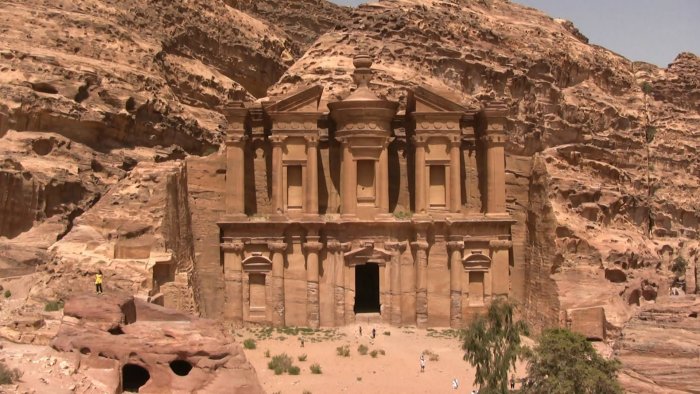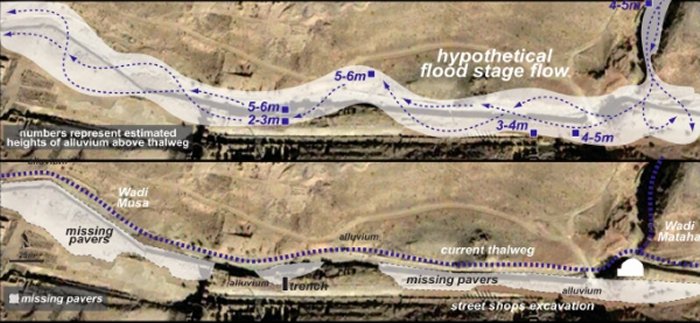A Great Flood Destroyed The Mysterious Ancient City Of Petra – Evidence Has Been Found
Ellen Lloyd - AncientPages.com - Magnificent ancient city of Petra was first inhabited by a Semitic-speaking tribe of the Edomites, mentioned in the Bible as descendants of Esau, the father of the Edomites in the hill country of Seir. After the Edomites, the Nabateans arrived and settled there in the third century B.C.
The Nabateans who were skilled ancient astronomers raised celestially aligned buildings at the site. Mysterious and legendary Petra, today known as a “fairy city of pink sandstone”, was lost to the western world, and erased from our memory for over a thousand years.
Archaeologists have slowly revealed some of Petra’s oldest secrets, but there are still many unanswered questions. Why did the Nabataeans abandon their sacred city? One scientist says he has discovered evidence indicating that the ancient city of Petra was destroyed by a Great Flood.
Sacred Ancient City Had Astronomically Aligned Temples
The Nabataeans prospered in the first century BC and the first century AD in what is now Jordan and neighboring countries.
These enigmatic people are mentioned about the beginning of the Christian era as a race distinguished for their astronomical and general knowledge. It is supposed that they were the ancestors of the ancient Babylonians and Chaldeans.
The ancient city of Petra, with more than 3,000 temples, tombs and thousands of caves carved out of sandstone rocks was built at the foot of Jordan’s Jebel al-Madhbah mountain, in the harsh desert of southern Jordan and situated in Mt. Seir, about 80 kilometers south of the Dead Sea and 2,775 feet above sea-level.
After being lost to the world for a very long time, Petra was rediscovered in 1812.
The purpose of the rock-cut city hidden away in a rather secret location has baffled many scholars, archaeologists and ordinary travelers. Was it a sacred city, a commercial center, or a fortress?
While examining the ancient city of Petra, scientists discovered evidence that builders of the site’s temples were skilled astronomers. There are several examples of how celestial events influenced the orientation of the great constructions of the Nabateans.
When the Nabataeans constructed their monuments, they observed equinoxes, solstices and other astronomical events that determined the Nabataean religion.
“The Nabataean monuments are marvelous laboratories where landscape features and the events of the sun, moon and other stars interact,” Juan Antonio Belmonte, researcher of Instituto de Astrofisica de Canarias and CSIC (Spain) said.
There is no doubt that the city of Petra was of great importance to the Nabataeans, and yet they deserted it – why?
Evidence Of Petra’s Great Flood Discovered
Unraveling the mystery of Petra’s destruction is very difficult without written records that could shed light on what took place in this region so long ago. However, it is possible to piece together the clues with the help of geology. By investigating rocks and other natural formation, the landscape can tell us a great deal about the region’s past.
There is evidence that Petra did survive a devastating earthquake that many previously thought had destroyed the city. According to Dr. Thomas R. Paradise, who is a Professor in geoscience at the University of Arkansas, the ancient city of Petra was destroyed by a Great Flood in the 4th century.
Professor Paradise has conducted research in Petra since the late 1980s and he is convinced traces of white sand found in the rubble offer proof of massive flooding that forced the city’s inhabitants to abandon their sacred and precious site.
How did white sand end up in a valley exclusively of red rock? Professor paradise says the white sand does not belong there.
See also:
Unclear Purpose Of Mysterious Rock-Cut City Of Petra - Was It A Fortress Or Sacred City?
Skilled Nabateans Celestially Aligned Petra's Wonderful Architecture
The Great Flood And Noah's Ark Were Real Events - Scientist Says
The most obvious evidence of a catastrophic flood, according to Professor Paradise, may be hidden tight beneath our feet. Aerial images and on-the-ground observation reveal huge areas of limestone pavements are missing from the surface of the Colonnaded Road from the Nymphaeum, past the South Portico, through the Temenos Gate to Qasr al-Bint.
The missing pavements were not stolen, but absent in patterns that create broad arcing voids.
The Nabataeans were aware flooding could destroy their entire city and they did their best to keep the Siq, Petra’s main entrance dry because it was their main connection to the outside world. Being innovative people, they created a tunnel to divert the rainwater from the Siq, but their plan failed and the tunnel led to a disaster.
Professor Paradise discovered evidence that the entrance of the tunnel the water was at some point massively backed -up. According to Dr. Paradise and his team when 5-7 meters of water floodwater reached the tunnel the flood covered the street with 16 feet of sand and debris.

The Nabataeans built a tunnel to divert the rainwater from the Siq, but this was not a good idea. Image credit: Dr. Tom Paradise
This massive flooding led to the end of Petra’s existence. Injuries and destruction would have been widespread and countless people died. Why there are no written records of Petra’s Great Flood is an unsolved mystery. But Professor paradise thinks the event might have occurred as a function of the great earthquake in 363 A.D., or the flooding simply happened so close in time that it was lost in the blur of devastation.
Has Professor Paradise solved the mystery of what caused the destruction of the ancient city of Petra? Perhaps he has. His evidence is intruding and certainly worth closer examination by other experts.
Massive Flooding Has Destroyed Many Ancient Civilizations
Of course, it would be the first time flooding led to the destruction of a great ancient civilization, though some ancient places managed to recover. According to archaeological records, Kish City survived the Great Flood that happened some 7,600 years ago and was mentioned in Jewish, Christian, and Muslim scriptures.
Not long ago, scientists found evidence that the ancient Chinese legend of the Great Flood is true and this cataclysmic event did indeed happen.
By carbon dating two different types of soil samples of what was once the ancient earthen dam, scientists were able to reveal that about 4,000 years ago, a massive earthquake struck central China creating a massive landslide in deep, narrow valley with rocky, steep sides. That landslide corked up the gorge, forming a pyramid-like dam of rock and dirt that blocked the Yellow River. The researchers estimate the damn held for about 6 to 9 months and when it finally broke the waters cause massive destruction.
Many people associate the story of the Great Flood with the Bible.
However, ancient cultures all across the world have myths and legends describing a time in the distant past when a horrifying Deluge wiped all almost all life on Earth. The truth is that except for Antarctica there is not a single continent whose population is not familiar with the story of the Great Flood and Noah’s escape.
The Great Flood that destroyed the ancient city of Petra is not the same event that is usually associated with the story of Noah’s Ark. Petra was destroyed much later, about 2,000 years ago. However, Professor Paradise’s evidence confirms what most of us already know, namely that many ancient civilizations did vanish from this Earth due to sudden Earth changes, such as for example – flooding.
Written by Ellen Lloyd - AncientPages.com
Copyright © AncientPages.com & Ellen Lloyd All rights reserved. This material may not be published, broadcast, rewritten or redistributed in whole or part without the express written permission of AncientPages.com and Ellen Lloyd
Expand for references
More From Ancient Pages
-
 Reliefs And Engravings Of Celestial Bodies And A Zodiac On Walls And Ceilings Of Luxor’s Esna Temple
Archaeology | Oct 5, 2023
Reliefs And Engravings Of Celestial Bodies And A Zodiac On Walls And Ceilings Of Luxor’s Esna Temple
Archaeology | Oct 5, 2023 -
 Unique And Priceless Large Roman Sculptures Found At Carlisle Cricket Club
Archaeology | May 25, 2023
Unique And Priceless Large Roman Sculptures Found At Carlisle Cricket Club
Archaeology | May 25, 2023 -
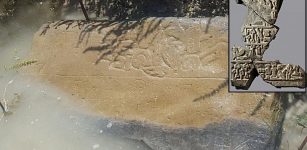 Lost City That May Have Defeated King Midas’ Kingdom Phrygia – Found Accidentally
Archaeology | Feb 23, 2020
Lost City That May Have Defeated King Midas’ Kingdom Phrygia – Found Accidentally
Archaeology | Feb 23, 2020 -
 Ancient DNA Reveals Migration From North America Across The Bering Sea And Unknown Prehistoric People In Siberia
Archaeology | Jan 12, 2023
Ancient DNA Reveals Migration From North America Across The Bering Sea And Unknown Prehistoric People In Siberia
Archaeology | Jan 12, 2023 -
 Scribes: One Of The Noblest And Highly Recommended Professions In Ancient Egypt
Featured Stories | May 10, 2023
Scribes: One Of The Noblest And Highly Recommended Professions In Ancient Egypt
Featured Stories | May 10, 2023 -
 Winged Hussars: Facts And History About The Polish Warriors, Their Armor And Military Tactics
Featured Stories | Feb 14, 2016
Winged Hussars: Facts And History About The Polish Warriors, Their Armor And Military Tactics
Featured Stories | Feb 14, 2016 -
 2,000-Year-Old Medusa Mosaic Is Considered The Pearl Of Ancient City Of Kibyra
Archaeology | Aug 25, 2020
2,000-Year-Old Medusa Mosaic Is Considered The Pearl Of Ancient City Of Kibyra
Archaeology | Aug 25, 2020 -
 Can Stonehenge Be Saved From Bulldozers Or Have Druids Been Defeated?
News | Nov 10, 2020
Can Stonehenge Be Saved From Bulldozers Or Have Druids Been Defeated?
News | Nov 10, 2020 -
 Viking Children Were Buried With Extremely Sharp Knives – Afterlife Tools To Be Used In Valhalla?
Ancient History Facts | Nov 29, 2017
Viking Children Were Buried With Extremely Sharp Knives – Afterlife Tools To Be Used In Valhalla?
Ancient History Facts | Nov 29, 2017 -
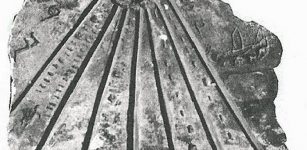 Controversial Davenport And Pontotoc Stele Reveal Ancient Egyptians And Black Africans Visited North America
Civilizations | Jun 27, 2014
Controversial Davenport And Pontotoc Stele Reveal Ancient Egyptians And Black Africans Visited North America
Civilizations | Jun 27, 2014 -
 12,000-Year-Old Burial Of Female Shaman Unearthed In Turkey
Archaeology | Jul 31, 2024
12,000-Year-Old Burial Of Female Shaman Unearthed In Turkey
Archaeology | Jul 31, 2024 -
 No Evidence Ancient Caribbeans Were Cannibals – Scientists Say
Archaeology | Aug 23, 2021
No Evidence Ancient Caribbeans Were Cannibals – Scientists Say
Archaeology | Aug 23, 2021 -
 India’s Tradition Of Advanced Metallurgy, Craftsmen And Blacksmiths Is Longer Than Thought
Ancient Technology | Mar 19, 2019
India’s Tradition Of Advanced Metallurgy, Craftsmen And Blacksmiths Is Longer Than Thought
Ancient Technology | Mar 19, 2019 -
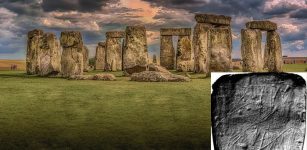 New Light On Prehistoric Chalk Plaques From Stonehenge Using Innovative Technology
Archaeology | Nov 3, 2021
New Light On Prehistoric Chalk Plaques From Stonehenge Using Innovative Technology
Archaeology | Nov 3, 2021 -
 Hengist And Horsa: Legendary Anglo-Saxon Warrior Brothers And Leaders Of First Settlers In Britain
Featured Stories | May 28, 2016
Hengist And Horsa: Legendary Anglo-Saxon Warrior Brothers And Leaders Of First Settlers In Britain
Featured Stories | May 28, 2016 -
 Riddle How Human’s Uniquely DNA Evolved Solved By Scientists
DNA | Jan 13, 2023
Riddle How Human’s Uniquely DNA Evolved Solved By Scientists
DNA | Jan 13, 2023 -
 Jersey’s Ancient Faldouet Dolmen Vandalized To Extract Quartz Crystals
News | Nov 10, 2020
Jersey’s Ancient Faldouet Dolmen Vandalized To Extract Quartz Crystals
News | Nov 10, 2020 -
 Ancient Maya: Wealth Inequality And Despotism That Governed The Society
Archaeology | Mar 26, 2021
Ancient Maya: Wealth Inequality And Despotism That Governed The Society
Archaeology | Mar 26, 2021 -
 Ancient DNA Of Segorbe Giant Reveals A Brutal Event In Medieval Spain
News | Sep 26, 2021
Ancient DNA Of Segorbe Giant Reveals A Brutal Event In Medieval Spain
News | Sep 26, 2021 -
 Unique Life-Sized Camel Carvings In Northern Arabia Are Much Older Than Previously Thought
Archaeology | Sep 15, 2021
Unique Life-Sized Camel Carvings In Northern Arabia Are Much Older Than Previously Thought
Archaeology | Sep 15, 2021


